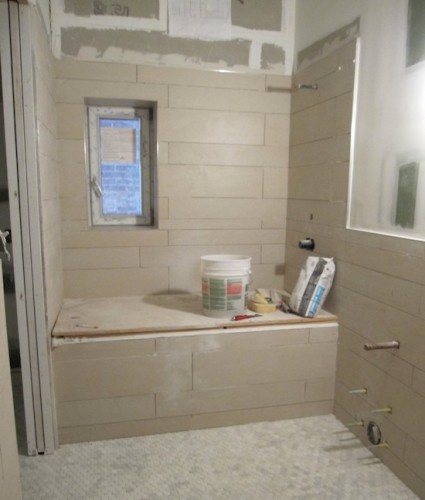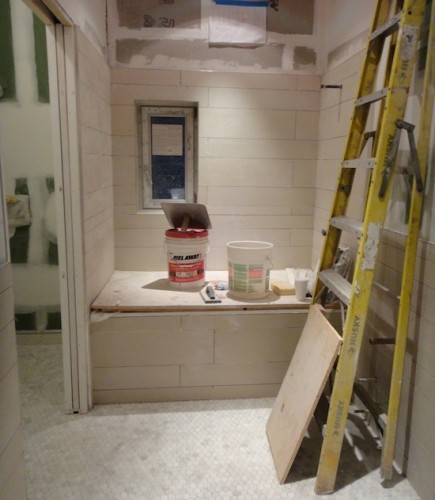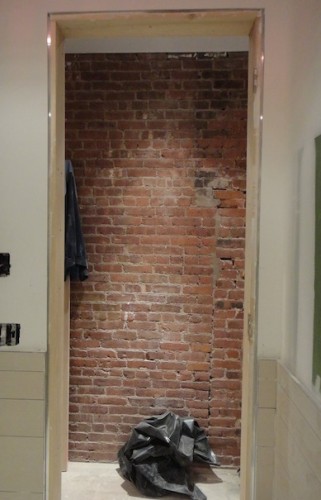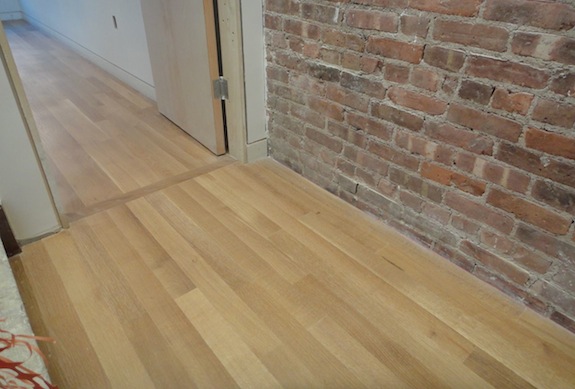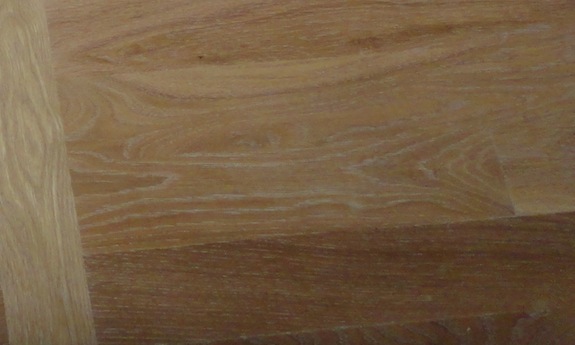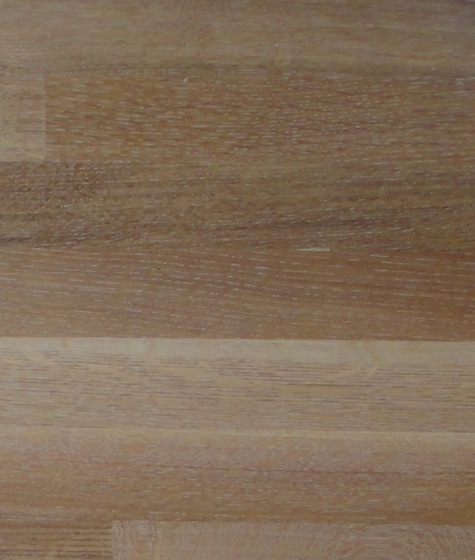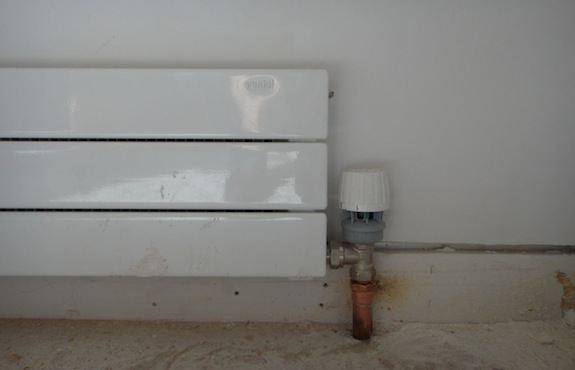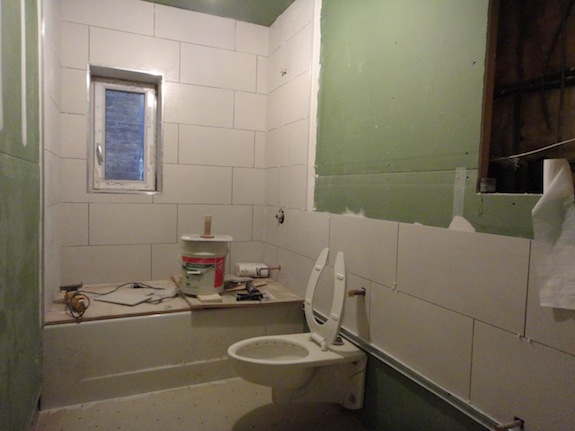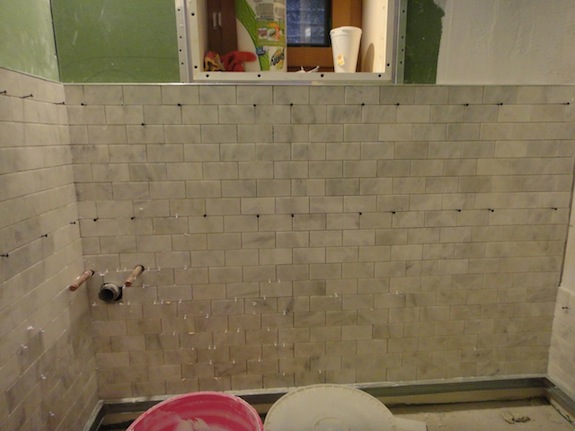The insane bureaucracy at the Department of Buildings is causing us huge problems, AGAIN. Near the end of every job there are a host of little things that have to be corrected on the filed plans so when the final inspection happens, what the inspector sees matches what’s on the plans. The most critical issue in our case is that the sizing of the gas pipes wasn’t specified in the original plans, and the plumbing inspector won’t sign off on the work until they’re shown. Without his sign off we can’t get our “blue card” and without the blue card we can’t get gas service and without gas service we have no heat. Without heat we can’t really put water throughout the building for fear of frozen pipes. But pipe sizing is just one of many issues that need to be corrected on the plans – there’s a bunch of other stuff – none of which is major.
When we filed for a Post Approval Amendment (PAA) we were told our original plan examiner had been promoted – he’s now part of some centralized watch dog oversight group. The problem is the new plan examiner has to sign off on everything – not just the things that are changing. He found a pretty fundamental flaw with the original filing – the “construction classification”…
| Construction Classification: | |
| Existing: | 3: NON-FIREPROOF STRUCTURES |
| Proposed: | I-D: 1 HOUR PROTECTED |
The problem is 1D with 1 hour fire protection isn’t what we’re doing – that would require all floors/ceilings and significant walls to have a 1 hour fire rating – the job should never have been filed that way. The plans clearly show that only certain parts of the building will have 1 hour fire rating – between the units, around the boiler room and the stairwell in our unit. The architect and expediter got it wrong, I didn’t notice it, and the original plan examiner missed it. But it makes a difference. Apparently construction classification is something FDNY relies on when they go to fight a fire. They don’t send fire fighters in after a certain amount of time unless they know the building will be safe.
The problem compounds itself since certain things that are allowed in fire rated construction aren’t allowed in non-fireproof buildings. For example closets and storage spaces under egress stairs aren’t allowed since a fire could start in the closet. So now we have to go back and pick the best/correct classification, and then see if there’s anything we’ve built that doesn’t comply with that classification. It’s fortunate at this point that we’re “fully sprinklered”, but my worry is that additional sprinkler heads might be required since “fully sprinklered” means different things depending on the situation. For example our power room on the parlor floor is under the stairs. Will it now need to be sprinklered?
The plan examiner made it clear that he wasn’t going to stop with the construction classification. Our appointment wasn’t as long as it needed to be and he had just started in on other items by the time it was over. He pointed to the stairs off the rear deck that go down into the garden and asked aloud if that they were a “permitted obstruction”. Because our rear yard is a couple feet below the level of the basement/ground floor the staircase from the rear deck goes (a couple feet) “more than one story” and that changes things. UGH… For god’s sake – it’s essentially one story – is it really that big of an issue? I’m thinking we may need to create a berm in the back yard that’s level with the basement/ground floor and have the stairs touch down at that point in the yard. IMHO, that’s just bureaucratic insanity, but we gotta do whatever it takes to get things done and signed off…
Unfortunately, you can’t get individual sheets approved. In our case we need the gas riser diagram approved, but all the other things are holding it up. On a larger project you’d file the plumbing as a separate job so you could do narrower PAAs, but that generally isn’t cost effective in project our size. If we could just get that one sheet signed off, things wouldn’t be so dire right now.
The bottom line when we left the plan exam was that, unless we do something drastic, it will probably take months of appointments to get the PAA approved. The new plan examiner is just going to keep finding one thing after another and draw out the process as long as possible – all things that have been signed off on in the past. We don’t have months to complete the project. We need gas, we need heat, and we need to move in so we can stop paying rent and storage fees on top of mortgage.
Our architect has worked on some really large, big budget projects and as a result knows expediters with decades of experience who have a much easier time getting things through DOB. We’re hiring one of those people to do code review and take over expediting. It’s going to cost us pretty big money, but delays and problems could potentially cost us even more. When we have our next plan exam, I’m hoping the plan examiner will know and trust our new expediter and when the plan examiner does bring up issues I hope our new expediter will show he knows the code as well or better than the plan examiner. And if competence and experience aren’t enough, after decades of working with DOB, I’m guessing the new plan examiner will be friends with enough senior people at DOB that the plan examiner will know that just being arbitrarily difficult could backfire on him.
I was thinking ConEd was worse than the DOB. Now I’m back to thinking DOB is worse. I’ll just be happy when things are signed off and we can move in.

